Monday, January 22, 2018
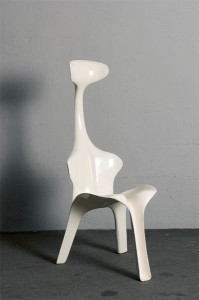
The white Floris chair made by Gunter Beltzig in 1968 invites you to sit down comfortably at the same time at it does not.
The material from which the strangely shaped chair is made is solid but smooth fiberglass and although the chair has different parts they can’t be separated from each other for it is a whole.
By the way it is made and shaped, your body should fit precisely when sitting in this chair, the back part being in the shape of a human back with space for your backbone to rest in and shoulders on both sides.
The seat being in the shape of a flattened butt, mirroring your seated butt, looks still too curvy for you to sit completely straight.
Its neck, which smoothly devolves from the shoulders seems way too long for your head to be able to reach the headrest and if you would place your head on the right spot, your back probably wouldn’t be anymore.
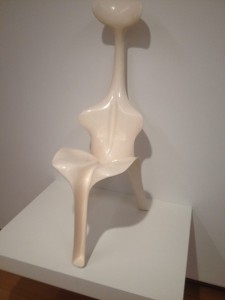
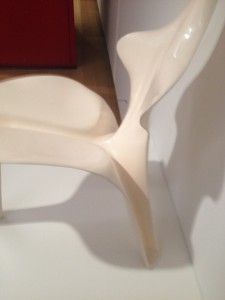
Because of its alienated human body features, there must be only one way to sit or else you will lose the comfort it might have.
But still, the chair gives the impression that it is not meant to be used at all.
That this chair is not meant to be used in the Stedelijk Museum, is made clear by its place on a small white platform which is attached to the wall.
The color of its surroundings is all white giving no room for any distraction and because its the only chair in the room that you have probably never seen before, it pops out and catches your eyes quickly.
While I walk on, the white alien chair waits lonely for the right person who fits.
Sunday, January 21, 2018
Oil, canvas, metal, clay,
Met in The Stedelijk one day.
A strong effect can be produced with simple actions. Sometimes it makes a big difference by just putting together things that never met each other before.
Maarten Baas’s clay furniture is something that I didn’t see at the times of the old Stedelijk permanent exhibition. The composition includes are different size colored chairs, a bookshelf and a small table. They are actually made out of a synthetic clay put on top of a metal skeleton. The objects are placed on white square shelves attached to a wall on different levels.
It will be difficult to write about only one of these objects because they are placed so close to each other that I immediately thought of them as one composition.
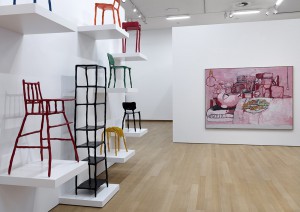
The wall on which all the clay furniture is exhibited happens to be in close conjunction to a nearby painting “Painting, smoking, eating” by Phillip Guston. This neighbourship doesn’t seem to be random. Put in this corner of the space all these objects create a common vibe. The thick and handcrafted legs of the clay furniture resonate with the fat lines of the paint on Guston’s canvas. The furniture and the painting are so alike that you can easily imagine these chairs, the table and the shelf to origin from Guston’s painting which makes them highly connected. The painting is so much over-layered with paint that it produces the visual effect of the furniture almost dripping on the floor. Both furniture and painting have this tactility in them. You can see how thick and greasy the layers of the paint is, so you want to touch the legs to feel the softness of the clay.
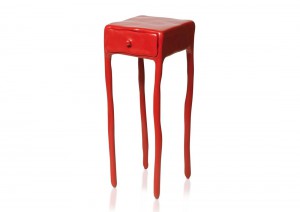

To conclude I’d like to emphasis again how beneficial the neighbourship of these objects happened to be. Putting Guston’s painting and Baas’s furniture together places the dilemma of placing art and design in the space in a whole new light.
continue reading





